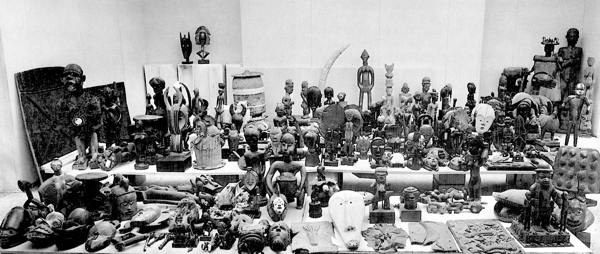Looking at African Things: Exhibiting Africa: Museum Representation of a Continent

Photo: "African Negro Art," Exhibition at the Museum of Modern Art, New York City, 1935.
How have Africa and Africans been represented in museums and other cultural institutions in the past, and how are they represented today? Perceptions of Africa in Europe and North America have for the last several centuries been informed, in large part, by problematic, often racist, readings of the continent and its people. What are the origins for these views, and why do so many of them persist in the present day? "Exhibiting Africa" examines the social, political, economic and aesthetic ideologies that have informed representations of Africa since the beginning of the nineteenth century in a variety of exhibitionary contexts, including world expositions, natural history museums, art museums, zoos, and theme parks. Biweekly meetings will include lecture and discussion built around reading assignments and museum/gallery visits. Towards the middle of the semester, the class will visit the African galleries at the Detroit Institute of Arts as well as a private collection of African art.
HISTART Concentration Distributions: B. Sub-Saharan Africa, 3. Early Modern, 4. Modern and Contemporary.
Weekly readings will be drawn from a set of articles, essays and book excerpts available on a dedicated Canvas site.
Students will be assigned two short papers; one that reviews a historic "exhibitionary event" (e.g., past exhibition, world's fair, theme park attraction, etc.), and another that critiques a recent museum exhibition dealing with Africa.
Course Requirements: Class participation (20%), weekly "low stakes" quizzes (20%), "exhibitionary event" review paper (20%), exhibit critique (20%), final exam (20%).